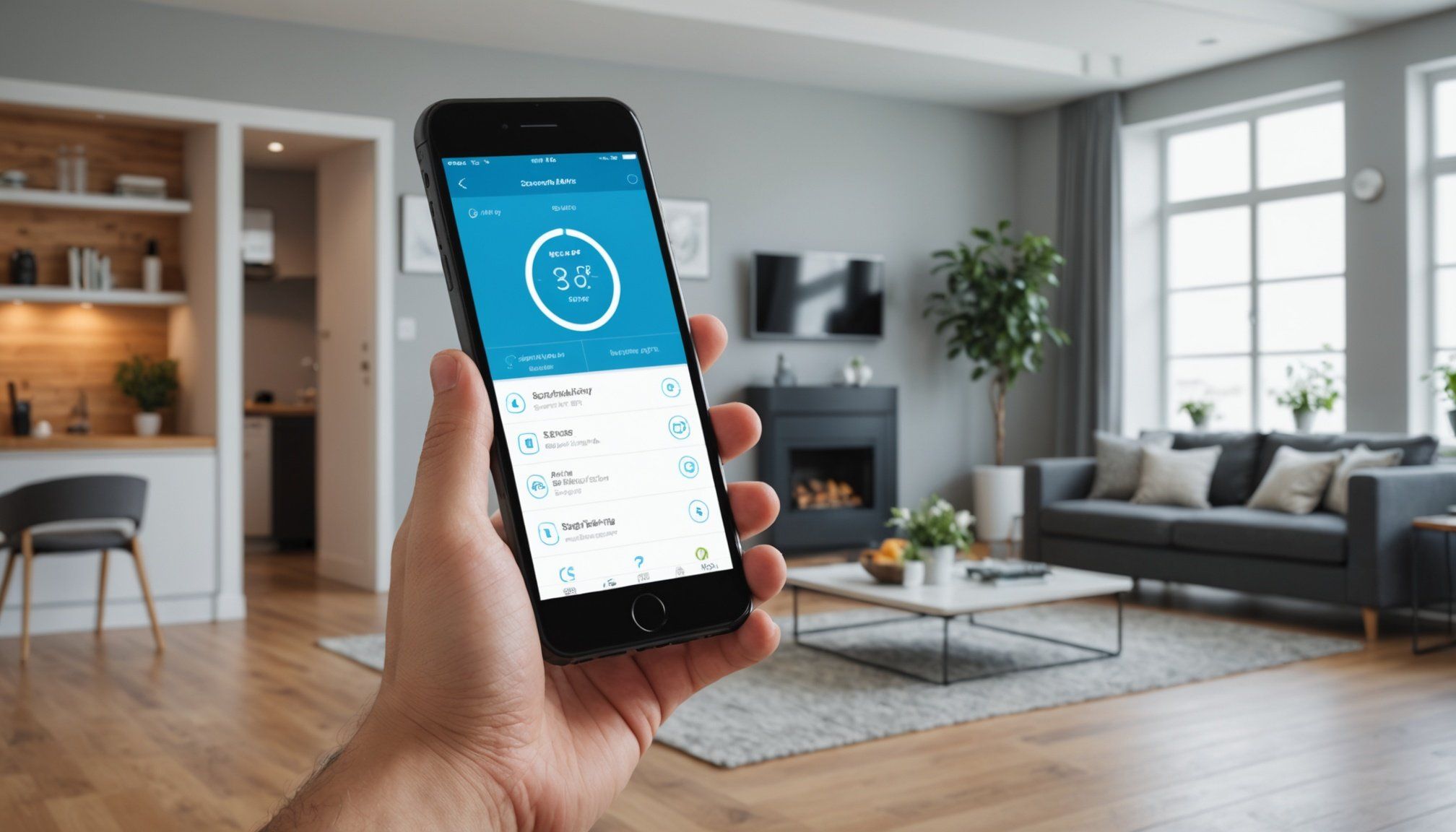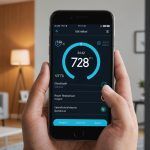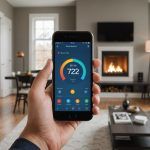Overview of Smart HVAC Technology
Smart HVAC systems represent a leap forward in indoor climate control, offering enhanced efficiency and convenience. At their core, they comprise advanced heating, ventilation, and air conditioning components that interconnect to monitor and adjust indoor environments intelligently. Key elements include smart thermostats, sensors, and connectivity modules.
Smart HVAC systems seamlessly integrate with mobile technology, allowing users to control climate settings remotely. Through dedicated apps, homeowners can adjust temperatures, monitor energy usage, and receive maintenance alerts directly on their smartphones or tablets. This integration enhances user interaction, making climate control more accessible and manageable from virtually anywhere.
Also read : Revolutionize your home heating: utilize your smartphone for expert zone temperature control
The technology behind smart HVAC units combines traditional HVAC components with cutting-edge digital solutions. Sensors play a crucial role, constantly gathering data about the indoor climate. This information is processed, enabling automatic adjustments to maintain optimal conditions. Connectivity features, such as Wi-Fi and Bluetooth, facilitate communication between the system and mobile devices, ensuring real-time updates and remote control capabilities.
In summary, smart HVAC systems offer a sophisticated solution for maintaining perfect indoor climates. By integrating with mobile technology, they provide unparalleled convenience and efficiency, transforming how we experience and manage our indoor environments. These advancements underscore the pivotal role of technology in modern home climate control.
In the same genre : Revolutionize room comfort: effortless temperature control and monitoring with smart thermostats through your smartphone
Benefits of Mobile Monitoring and Control
Mobile control has transformed how users interact with their home systems, offering unparalleled user convenience. Imagine adjusting your home’s thermostat from your office desk or checking the security cameras while on a holiday. The remote access afforded by mobile control applications eradicates the limitations of traditional systems, enabling users to manage their home’s functionalities regardless of location.
Beyond convenience, mobile control significantly contributes to energy efficiency. Users can optimise energy consumption patterns, reducing utility bills and promoting sustainable living. For instance, smart thermostats can adjust settings automatically based on real-time data, ensuring that energy is used only when necessary. This not only enhances comfort but also results in substantial savings.
Real-time data monitoring is another pivotal benefit. Access to current data allows users to make informed decisions, such as identifying areas of excessive energy use or detecting malfunctions early. This proactive approach aids in maintaining home systems’ efficiency and longevity.
Additionally, real-time notifications through mobile control apps prompt significant issues, avoiding delayed responses. The combination of these benefits highlights the practicality and necessity of mobile control, making it an invaluable tool for modern households seeking energy efficiency and informed decision-making.
Comparing Popular Smart HVAC Systems
Understanding the differences between smart HVAC models is crucial for making informed decisions. Exploring these systems offers insight into various features, user experience, and value.
Key Features of Leading Brands
The features overview is extensive, showing that leading brands focus on energy efficiency, smart integrations, and customized climate control. Incorporating AI, these systems adapt to user preferences, optimizing performance over time. Products from Nest, Ecobee, and Honeywell often come with voice control and smartphone applications, enhancing user interaction.
Pricing and Value Assessment
Investing in smart HVAC systems requires careful consideration of cost versus benefits. Product comparison commonly reveals a price range from $200 to $500 for initial models, with advanced systems reaching up to $1,000. Long-term savings are notable, with potential reductions in energy bills by up to 20%. It’s essential to balance upfront expenses with the efficiency gains these systems promise.
User Experience and Reliability
Smart HVAC models provide varied user experiences; however, most are geared towards convenience and reliability. Feedback on systems like Nest and Ecobee highlights ease of installation and operation. Reliability is often dependable, but some users report inconsistent connectivity issues. Overall, product durability is generally high with regular software updates, ensuring the system remains current and functional.
Installation Guides for Smart HVAC Systems
Setting up a smart HVAC system presents an exciting opportunity to modernise home climate control. Here’s a clear installation guide to navigate both DIY and professional routes effectively.
DIY Installation: Step-by-Step Guide
For tech-savvy homeowners, embarking on a DIY setup process offers both cost savings and convenience. Begin by reading the HVAC unit’s manual thoroughly. Ensure you have the necessary tools: drill, screwdriver, level, and wire stripper. Turn off all power to prevent electrical hazards. Mount the smart thermostat by marking and drilling holes at the recommended spot. Attach wiring carefully, matching the manual’s wire diagram. Secure the unit and perform a system test to confirm operation.
Professional Installation: When to Consider
Even with a detailed installation guide, some might find the process daunting or beyond their technical skills. Hiring a professional is wise if your home’s HVAC configuration is complex, or if you’re uncomfortable with electrical work. Professionals ensure compliance with all safety standards and offer additional configuration advice.
Common Installation Issues and Solutions
During the setup process, common hitches include incorrect wiring, connectivity issues, or mounting errors. Double-check wire connections and router compatibility, consulting online forums for insights or frequently contacted customer support. Always follow safety protocols. Proper adherence transforms these challenges into minor hurdles on the path to enhanced climate control.
User Reviews and Testimonials
Customer feedback provides valuable insights into the real-world performance of products. Satisfaction ratings often highlight how well a product meets user needs or where it falls short. In this section, we’ll explore what users really think by dissecting their experiences.
Detailed User Experiences
One way to gauge true product performance is through detailed user experiences. Customers frequently share how products help them save time or ease their routines, offering practical understanding beyond technical specs. First-hand accounts describe how intuitive setups can enhance overall satisfaction ratings, while potential hurdles can prompt unexpected frustration.
Common Praise and Critiques
Common themes emerge in user reviews. Praise often centers around convenience and efficiency, while common critiques might focus on areas like durability or ease of use. Satisfaction ratings are a composite of such experiences, pointing to both strengths and areas for improvement.
Case Studies
Aggregating these insights reveals case studies that showcase successful installations, offering a blueprint for future consumers. For instance, a product that streamlines tasks or integrates seamlessly into daily life typically garners high satisfaction ratings. These powerful stories not only validate marketing claims but also guide potential buyers in their decisions. Through this lens, we gain a nuanced understanding of what it means to consistently deliver customer satisfaction.
Tips for Optimizing Indoor Air Quality
Improving indoor air quality is vital for maintaining health and comfort within our living spaces. Poor air quality can lead to health issues, including respiratory problems and allergies. Thus, understanding optimization tips and practices is essential to enhance the environment we spend much of our time in.
Simple practices can significantly impact air quality. Regularly replacing HVAC filters is one of the most effective methods. These filters trap dust, pollen, and other pollutants. Using natural ventilation, such as opening windows, helps circulate fresh air and reduce indoor pollutants.
The integration of smart HVAC systems plays a revolutionary role in indoor air quality management. These systems, equipped with advanced sensors, can automatically adjust settings to maintain optimal air conditions. This not only purifies the air but also ensures efficient ventilation.
- Use air purifiers with HEPA filters to capture microscopic pollutants.
- Incorporate houseplants which naturally clean the air.
- Employ dehumidifiers in damp areas to prevent mold growth.
Understanding these optimization tips can yield significant health benefits, making our indoor environments safer and more comfortable. Additionally, adopting these practices promotes long-term well-being, preventing air-related health issues and enhancing overall quality of life.











